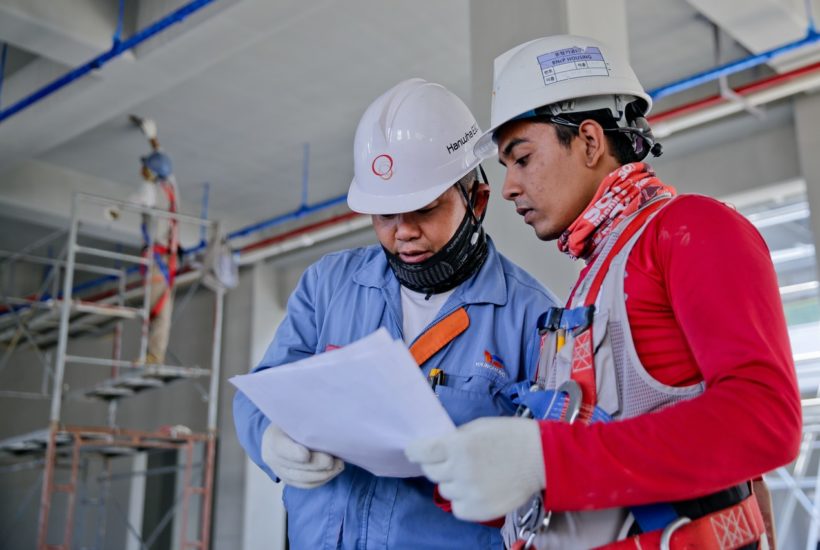Business
How Leading AR Firms Like Xrapplied Are Solving Skills Shortages
An aging population is bringing about a skills shortage in the workforce, leading some companies to turn to AR technology that firms like XRApplied are producing. With the ability to observe the world and overlay information directly into it, AR has the power to bring workers up to speed with complex tasks, enabling them to do work that would normally have required lengthy training.

In many industries where skilled professionals are needed to, quite literally, keep the lights on and the cogs turning, a growing skills shortage problem is making itself felt. From mainframe programmers to field service technicians, experienced professionals are now evaporating out of the labor pool faster than they can be replenished. This is forcing firms to turn to novel solutions like Augmented Reality (AR) technology to address the problem.
Of course, solutions leveraging augmented reality will never be universally applicable. For example, nothing short of an advanced code-writing AI will ever replace the deep knowledge of software architecture and algorithms needed by mainframe professionals. However, where a worker’s core competencies relate to primarily procedural operations, like servicing equipment in the field, AR shines bright.
What’s Driving the Skills Shortage?
As with anything, there are multiple factors driving the growing skills shortage problem. Some of these factors can include shifts in the economy (e.g. higher salaries in other sectors), shifts in populations (e.g. working-age populations relocating), and changing preferences amongst new entrants to the labor force.
However, whilst all of these factors come into play in varying degrees when we drill down into individual verticals, at a macro level things are simpler. In a nutshell, the major contributing factor to skills shortages today is an aging population.
To put some perspective on the problem, it is estimated that for every 12 baby boomers reaching retirement age today, there are only 10 Gen Z workers coming into the workforce. Put another way, we’re only replacing about 83% of retiring workers.
How Can Augmented Reality Help to Address the Problem?
When looking at what jobs can benefit from AR, one set of jobs that stands out are those that are routine and predictable. This is not to say that the work is necessarily simple. In fact, some of the biggest advantages come when the work is complex. But this complexity should occur when the tasks involve sophisticated technical procedures or large amounts of predictable conditional branching—AR is not here to conceive your marketing strategy, punch lines of COBOL, or to answer your vague philosophical questions.
Examples of these tasks abound in technical service roles, such as field technicians charged with building and maintaining complex machinery and systems. Firms are also deploying AR in roles where workers need to remember and be able to recall large amounts of information, such as in pick and pack warehouses where working through order details and finding item locations can add significantly to the time needed to assemble orders—something AR can solve when paired up with a company’s existing data databases.
NASA’s Real-Life Example of AR Augmenting Worker Skills
While NASA is by no means the first one to deploy AR in this type of application, they are one of the latest. In this example, the space agency has deployed a pilot implementation of a broader program, building an AR maintenance guide for the T2 treadmill onboard the International Space Station (ISS).
Being more sophisticated than a regular treadmill—it has, for example, special vibration-dampening mechanisms built in—it was the perfect candidate for the trial. It also served as the perfect demonstration for how AR can remove the need for training, constant references to manuals, or external supervision to perform complex tasks. The successful pilot program is now expected to be expanded across a huge range of complex procedures astronauts perform in space
NASA’s interest here clearly comes from the exigencies of space travel. Small, remote crews need to maintain and operate all manner of equipment, from complex science experiments to waste recycling systems. However, their problems are identical to the skills shortage currently facing the earth-based labor market. The only difference is the cause of the shortage.
AR For the Non-Rocket Scientist Crowd
While NASA may provide the perfect example of AR as a solution to skills shortages, not every enterprise is in the business of recruiting rocket scientists. Nor do they have the same R&D budgets NASA has. For some time, this has held AR technology out of reach for the average enterprise, and thus it has remained the domain of companies like GE and Amazon who have the expertise and resources to explore it.
However, as immersive technology matures, so too are the firms that produce it. This is seeing leaders like XRApplied emerge with technologies that are smashing down the technical barriers to entry, and making it affordable for smaller enterprises to leverage AR.
The result of this is that, in many cases, enterprises can now recuperate upfront costs for AR training and assistance systems in short order. Complex systems will, as always, remain big-ticket items by virtue of the amount of integration that needs to take place. However, do companies looking to implement order picking and packing systems, training and instructional manuals, or any other variety of such systems can now do so easily and quickly thanks to XRApplied.
—
(Featured image by Anamul Rezwan via Pexels)
DISCLAIMER: This article was written by a third party contributor and does not reflect the opinion of Born2Invest, its management, staff or its associates. Please review our disclaimer for more information.
This article may include forward-looking statements. These forward-looking statements generally are identified by the words “believe,” “project,” “estimate,” “become,” “plan,” “will,” and similar expressions. These forward-looking statements involve known and unknown risks as well as uncertainties, including those discussed in the following cautionary statements and elsewhere in this article and on this site. Although the Company may believe that its expectations are based on reasonable assumptions, the actual results that the Company may achieve may differ materially from any forward-looking statements, which reflect the opinions of the management of the Company only as of the date hereof. Additionally, please make sure to read these important disclosures.

-

 Crypto4 days ago
Crypto4 days agoThe Crypto Market Rally Signals Possible Breakout Amid Political Support and Cautious Retail Sentiment
-

 Impact Investing2 weeks ago
Impact Investing2 weeks agoEuropeans Urge Strong Climate Action Amid Rising Awareness and Support
-

 Crypto6 hours ago
Crypto6 hours agoBitcoin Hits New Highs in USD, But Euro Investors See Limited Gains
-

 Crypto1 week ago
Crypto1 week agoXRP vs. Litecoin: The Race for the Next Crypto ETF Heats Up
























